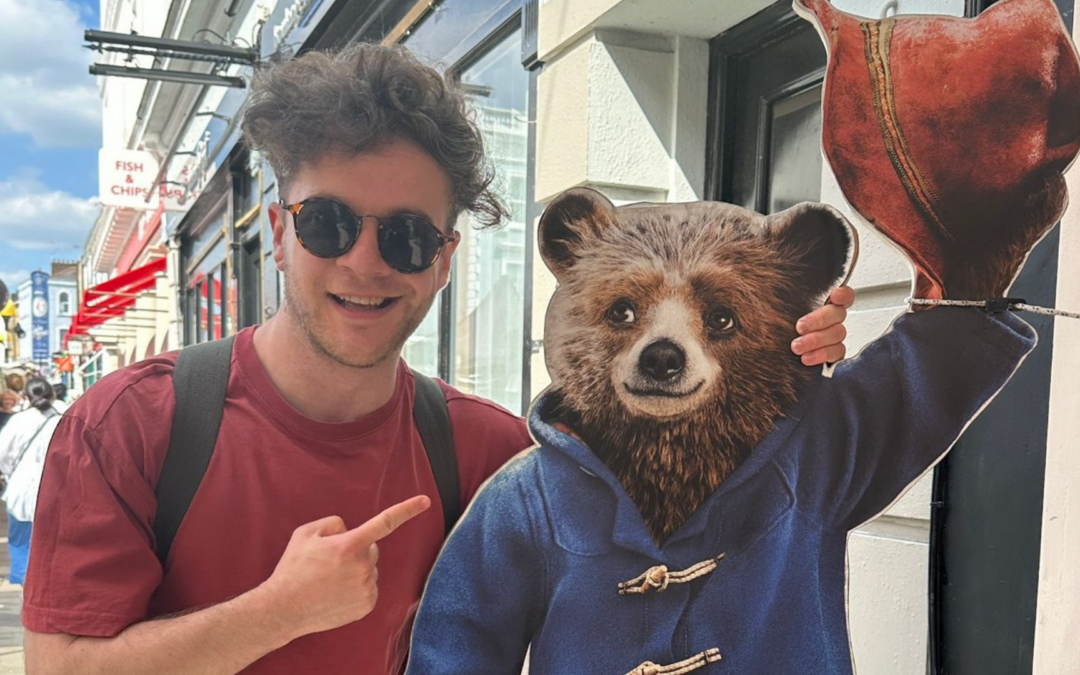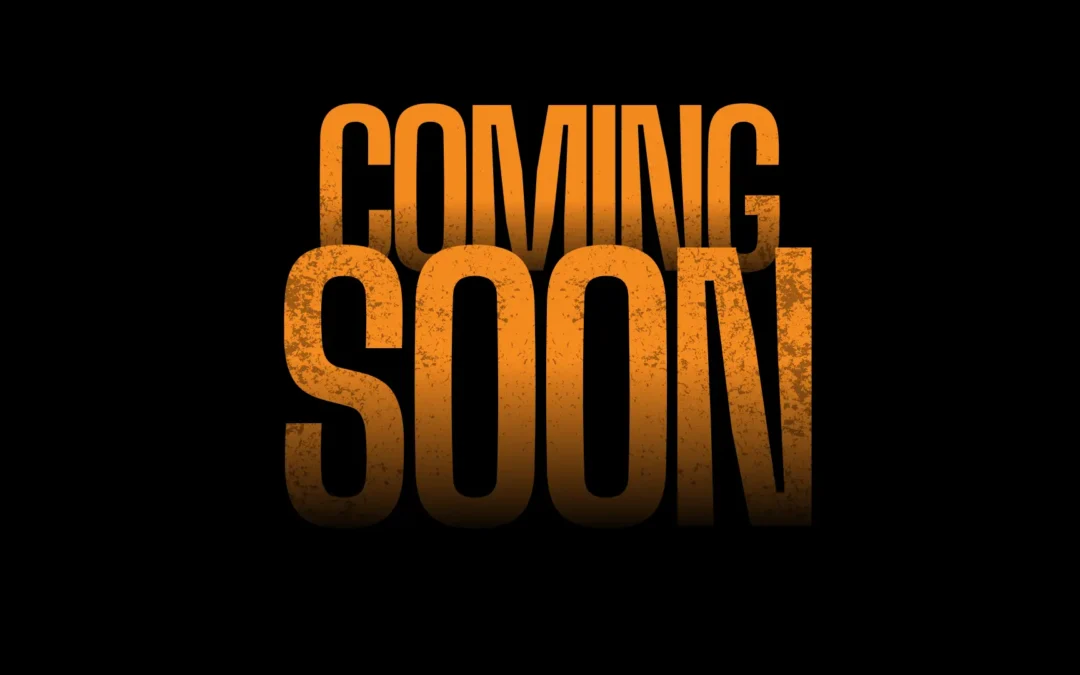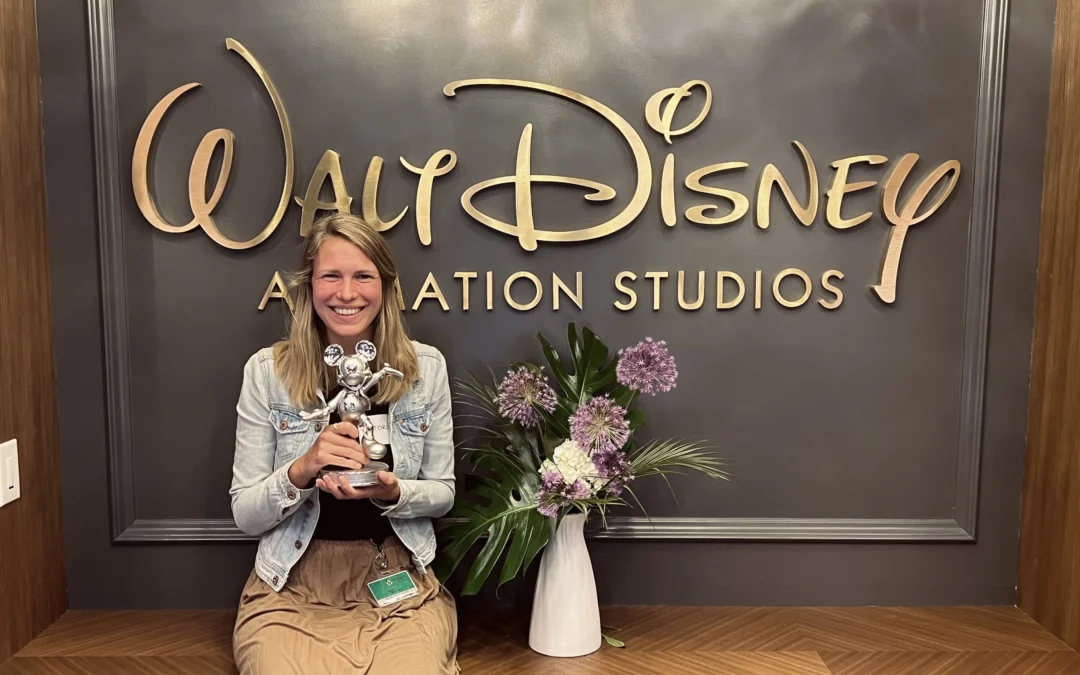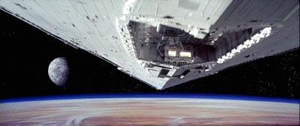
Star Wars: A New Hope
Film is a challenging medium, one that crosses over and includes so many art forms: Visual, musical, and the illusory arts of VFX. To work in visual effects, you have to love films and filmmaking. Somehow, it has to work its way into your blood. There are throngs of people who love going to the movies, but there’s a much smaller minority who become the true film geeks — and an even smaller minority who gets sucked in so completely that they HAVE to be a part of it.
For most professional visual effects artists, there are films and even specific shots that changed their lives in a profound way. For me there are many, all clichés in some way, but a few really stand out:
Everyone loves the original old school Star Wars — and as a kid growing up in the 70s and 80s, it loomed large in a boy’s mind. It was THE movie. Every kid I knew, boys and girls, had a running count of how many times they had seen it, and by seen it, we meant in the theater!
But the opening Star Destroyer shot holds a particular weight. It broke me out of whatever framework I had and completely created a world, almost single handedly in that one shot. It felt visceral, real, somewhat scary, and utterly, completely believable. This WAS intergalactic combat and we were dropped RIGHT IN THE MIDDLE OF IT. The scale and scope of the shot are part of the magic. That ship was HUUUUGE, I mean seriously, it went on and on and on. You knew right away that whoever the poor souls were in that little ship, they were screwed!
Stepping away from the movie a bit, I also knew that this was not a “regular film” or shot, this was a shot that had been crafted somehow, and specifically crafted to feel real, even though we all knew well and good that we couldn’t go out and film a mile long space craft that didn’t exist! And thus began my VFX consciousness. Star Wars was a visual effects film.
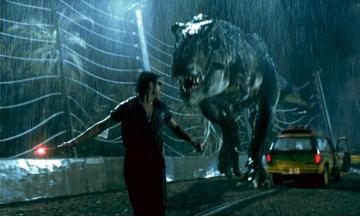
Jurassic Park
In 1993, when Jurassic Park was released, I was still involved in bicycle frame building, creating beautiful handcrafted mountain bikes, but I was doing some research into 3D CAD tools to start doing more intensive bicycle design work. I had seen some pretty advanced 3D animation and modeling tools of the time, including Alias Studio, Wavefront’s TAV, and SoftImage. These applications and the workstations they ran on (all Silicon Graphics at the time) fascinated me! I had a basic idea how all of it worked, but only in very simple terms, and I really had no idea what exactly you could do with them when it came to making movies.
Then Jurassic Park came out and my head almost exploded … so THAT’S what you can do with 3D animation software (and a LOT of talent)! The sequence that did it was the famous T-Rex attack in the rain. The level of realism was astounding, and I KNEW they were using computer graphics to do it! Right then and there, I knew I was going to end up in VFX and I put everything I had into making the leap!
Unfortunately for me, there wasn’t really any real professional training available, and certainly no professional mentorship — so I took all my meager savings (saving for a car!) and got a used SGI workstation, and the cheapest copy of Alias Animator I could get, and it was still almost $15,000 worth of hardware and software! And then I sat there for eight months teaching myself UNIX and Alias, diligently every night, until I had a very basic demo reel, which I copied to DAT and sent to the very first studio who would talk to me, a tiny corporate graphics shop … and I got the job! I was officially a “Junior Animator.” Big thanks to Star Wars and Jurassic Park … and a lot of hard work.
Note: All film stills are property of the respective studios.
—
Ben is our VFX Curriculum Director and leads the development of the VFX Fundamentals. If you’re ready to take the first step toward becoming a VFX artist, then be sure to apply now for our upcoming Summer 2013 term.
